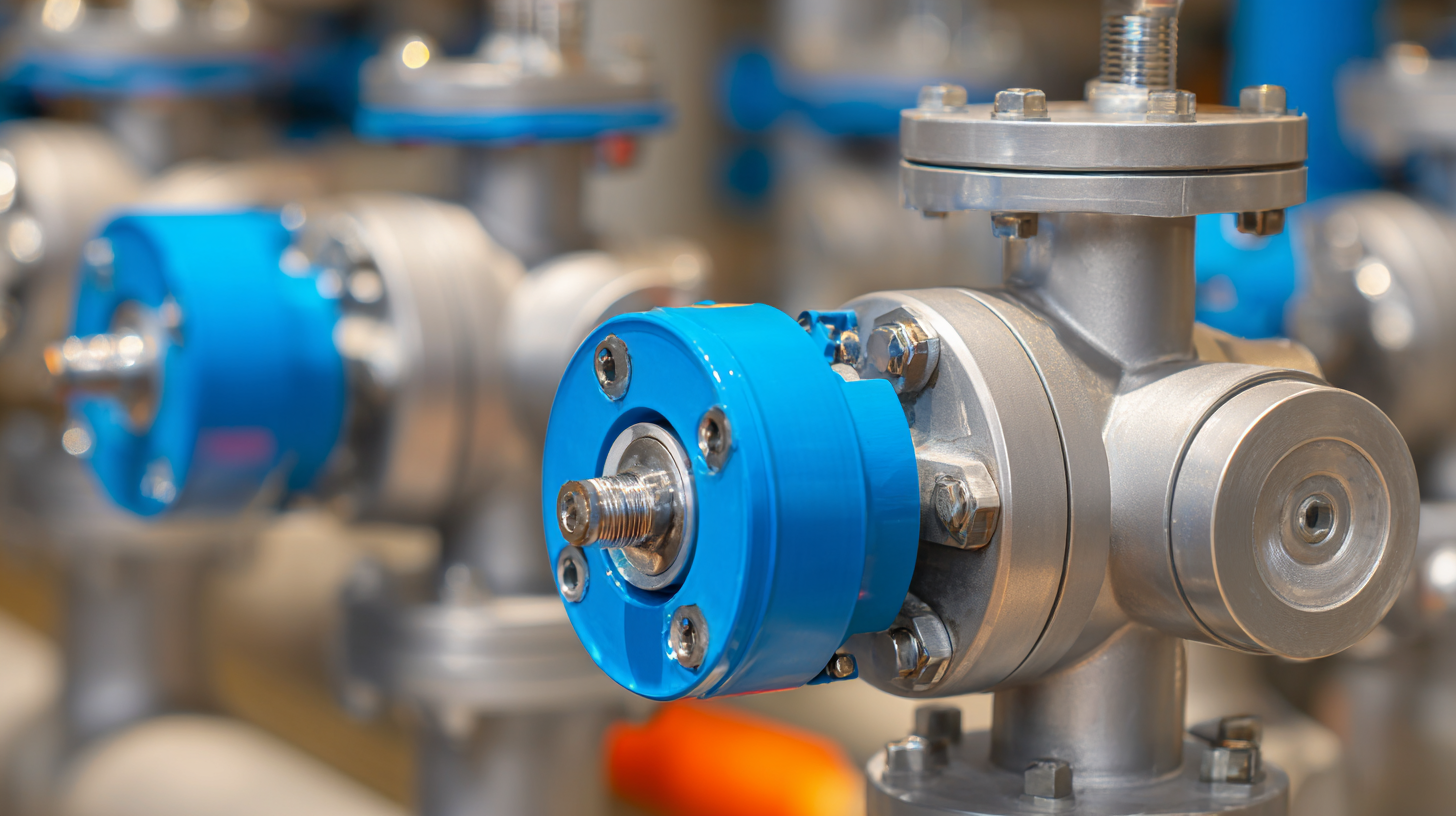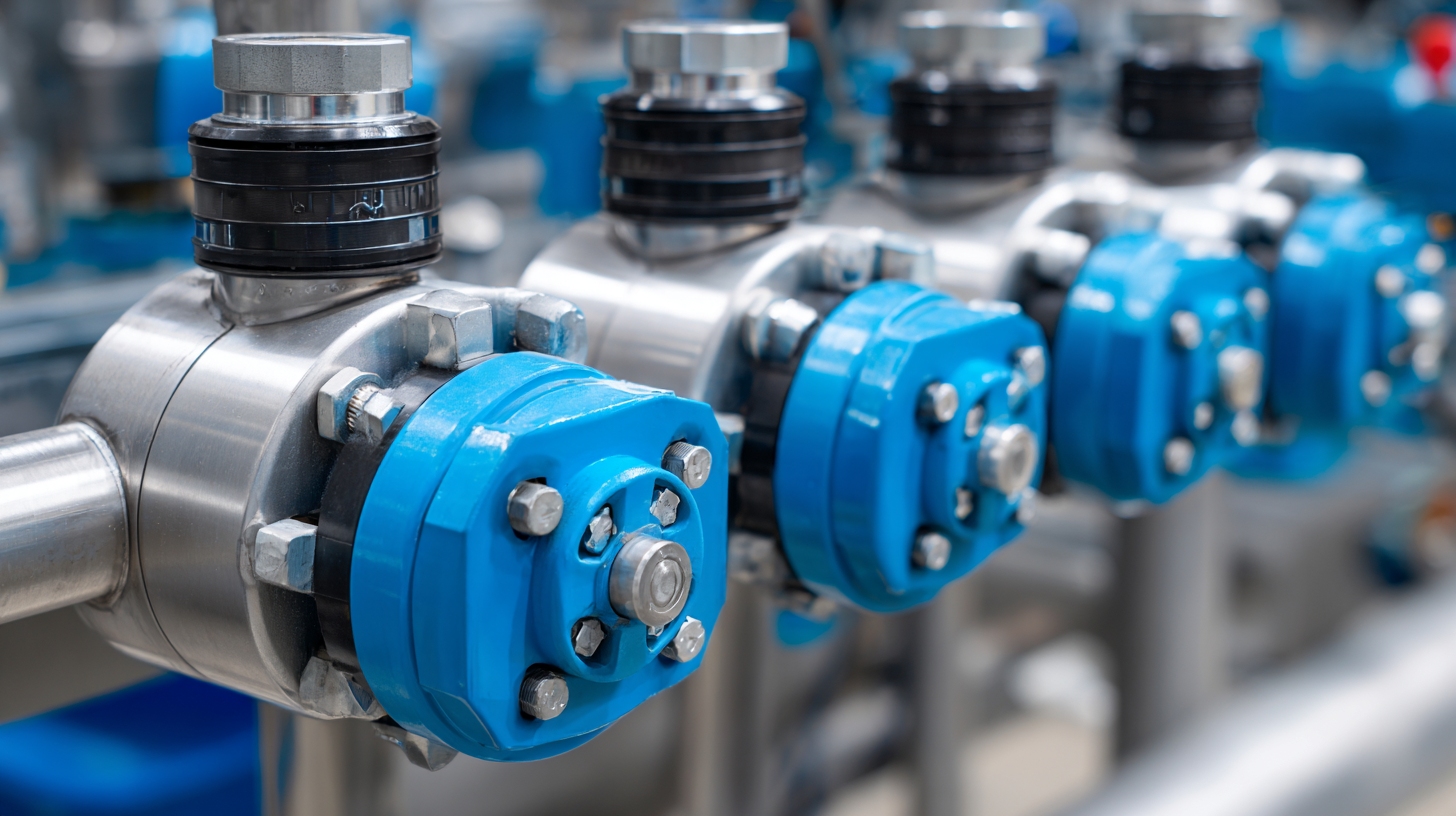
In the ever-evolving landscape of industrial processes, the choice of equipment can significantly impact operational efficiency and safety. Among the essential components, pinch valves play a crucial role in controlling the flow of liquids and granular materials in various applications. According to a recent report by MarketsandMarkets, the global pinch valve market is projected to reach USD 1.2 billion by 2025, growing at a CAGR of 5.3% from 2020. This growth underscores the increasing demand for reliable flow control solutions across industries such as water treatment, food and beverage, and pharmaceuticals. Understanding the differences between various pinch valve options is critical for manufacturers seeking to optimize their production processes while adhering to import and export certifications.

This guide aims to provide a comprehensive comparison of the best pinch valves available in the market, tailored to meet your specific industrial needs.
When evaluating pinch valves for industrial applications, several key factors must be taken into consideration to ensure optimal performance and reliability. One of the most critical aspects is the material compatibility of the valve with the fluids it will be handling. According to industry reports, improper material selection can lead to premature valve failure, resulting in costly downtime and maintenance. For instance, thermoplastic and rubber pinch valves are best suited for abrasive materials, while stainless steel variants excel in corrosive environments.
Another vital factor is the valve's sizing and pressure rating. Ensuring that the pinch valve is appropriately sized for its specific application is essential for maintaining system efficiency. Reports indicate that improper sizing can lead to flow restrictions, adversely affecting process control. It’s advisable to consult pressure drop charts and flow characteristics provided by manufacturers to find a suitable model.
**Tips:** Always evaluate the expected operating conditions such as temperature and pressure before finalizing a valve choice. Additionally, consider the ease of maintenance and whether the valve design allows for quick inspection and repair, minimizing downtime. Lastly, look into automation options, as integrating pinch valves with smart controls can enhance operational efficiency and provide real-time performance monitoring.

When considering pinch valves for industrial applications, it is essential to understand the different types available in the market today. Pinch valves can primarily be categorized into two types: manually operated and automated pinch valves. Manually operated valves are often favored for smaller setups where precision and control are paramount, while automated options typically employ pneumatic or electric actuators, facilitating seamless integration into larger, automated systems.
According to a 2022 market research report by MarketsandMarkets, the global pinch valve market is projected to reach $1.2 billion by 2027, driven by increasing demand for reliable flow control solutions in various industries including chemicals, wastewater treatment, and mining. The versatility of pinch valves, which can handle slurries, powders, and other viscous materials, is a significant factor in their growing popularity. Companies are now opting for lightweight, rubberized valves that not only enhance adaptability but also provide greater resistance to wear and tear, addressing the unique challenges faced in industrial fluid transfer applications.
When evaluating pinch valves for industrial applications, it is crucial to measure their effectiveness using specific performance metrics. Key factors to consider include flow rate, pressure drop, and durability under varying operating conditions. According to the Valve Manufacturers Association, a well-designed pinch valve can maintain a stable flow rate with minimal pressure loss, making it an ideal choice for handling abrasive materials and corrosive fluids. Regular assessments of these metrics can help identify inefficiencies and inform maintenance schedules, ensuring optimal performance.
Tips: To maximize the effectiveness of pinch valves, conduct regular performance evaluations using standardized testing methods. Implement a maintenance plan that addresses wear and tear, especially in systems experiencing fluctuating pressures or abrasive materials. Additionally, investing in high-quality valve materials can significantly enhance their longevity and reliability.
Furthermore, examining the valve's operational responsiveness is essential. Fast-acting pinch valves improve productivity by reducing downtime during process changes. Industry reports indicate that incorporating automated controls can enhance the efficiency of pinch valves, allowing for rapid adjustments in fluid flow without compromising system integrity. Businesses should consider these performance metrics when selecting pinch valves to match their specific industrial needs.
When considering an investment in pinch valves for industrial applications, conducting a comprehensive cost-benefit analysis is essential. Pinch valves are renowned for their reliability in handling corrosive and abrasive materials, which can significantly reduce maintenance costs over time. By evaluating the initial purchase price against potential savings in downtime and repair expenses, businesses can better understand the return on investment (ROI) that these valves deliver.
A critical aspect of ROI evaluation involves analyzing not just the purchase price but also the longevity and performance of pinch valves compared to alternative options. For example, although the upfront cost of a high-quality pinch valve may be higher, its durability and low failure rates can lead to substantial long-term savings. Additionally, assessing factors such as operational efficiency and energy consumption can uncover further benefits, making pinch valves a financially sound choice for companies looking to optimize their processes. By focusing on these elements, businesses can ensure that their investment aligns with their operational goals and ultimately enhances profitability.
| Pinch Valve Type | Initial Cost ($) | Maintenance Cost/Year ($) | Lifespan (Years) | Flow Capacity (L/min) | ROI (%) |
|---|---|---|---|---|---|
| Standard Pinch Valve | 300 | 50 | 10 | 150 | 40 |
| Heavy-Duty Pinch Valve | 500 | 70 | 8 | 200 | 35 |
| Automated Pinch Valve | 800 | 100 | 6 | 250 | 30 |
| Corrosion-Resistant Pinch Valve | 600 | 60 | 12 | 180 | 45 |
The industrial sector is experiencing a significant transformation as new technologies emerge, particularly in the realm of pinch valves. As industries strive for greater efficiency and sustainability, the latest advancements in pinch valve design and materials are addressing these needs. One notable trend is the integration of smart technology into pinch valves, which allows for real-time monitoring and remote operation. This not only enhances operational efficiency but also minimizes downtime and reduces maintenance costs.
Another critical trend is the focus on environmentally friendly materials that comply with stringent regulatory standards. As industries become more conscious of their ecological footprint, the demand for pinch valves made from sustainable materials has risen. These innovative designs not only contribute to improved performance but also help companies meet their sustainability goals. Furthermore, advancements in automation and control systems are enhancing the functionality and reliability of pinch valves, making them an essential component in modern industrial processes. As the future unfolds, we can expect even more groundbreaking innovations that will redefine the capabilities of pinch valves in various applications.
